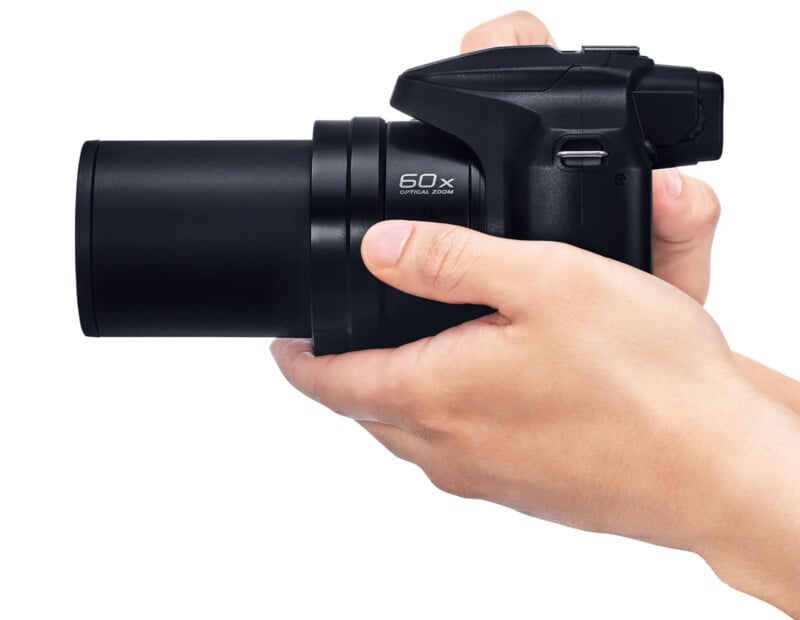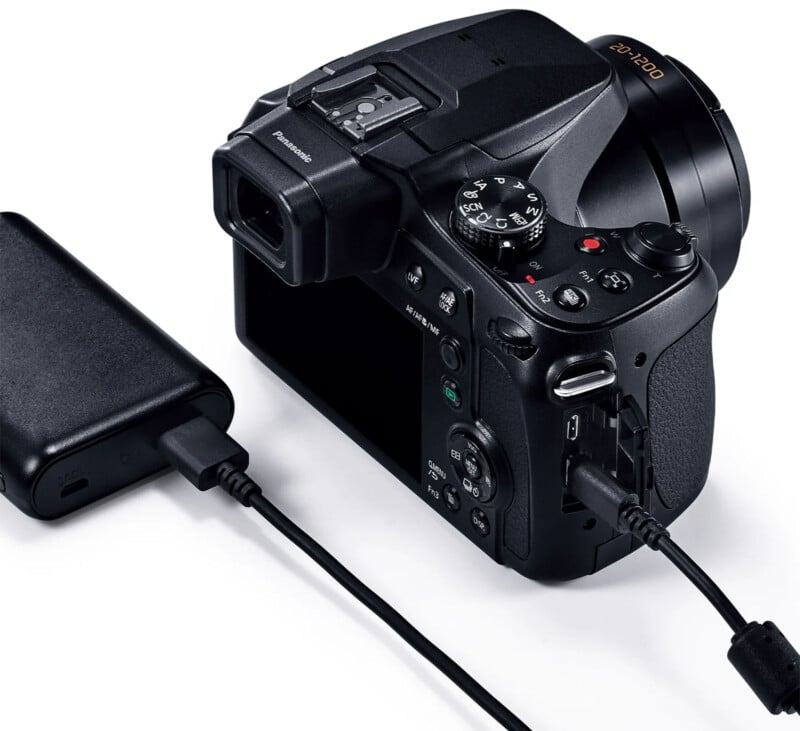![]()
Panasonic made a surprise announcement overnight, unveiling an updated Lumix FZ80D superzoom camera.
Designed primarily for wildlife and nature photographers, the original FZ80 launched way back in 2017. The new FZ80D brings some minor upgrades across the board but keeps the star of the show — the 60x zoom lens — unchanged.
Although superzoom cameras no longer receive the attention they once did, there is undoubtedly still demand for them. They are fantastic options for amateurs and enthusiasts who enjoy birding and other wildlife pursuits.

The Panasonic FZ80D shares the same imaging features as its standard FZ80 predecessor. The camera sports a small 18.1-megapixel Type 1/2.3 image sensor and a 20-1200mm equivalent lens. Maximum aperture ranges from f/2.8 to f/5.9.
Additional features include RAW image recording, 4K/30p video, optical image stabilization, and continuous shooting at up to 10 frames per second. The ISO ranges from 800 to 3,200.

The FZ80D doesn’t bring many changes or improvements to the table, even seven years later. Panasonic has improved the electronic viewfinder, moving it from 1.16 million dots to 2.36 million dots, a roughly 50% improvement. The rear LCD is also sharper, increasing from 1.04 million dots to 1.84 million. The new FZ80D model also adopts a USB-C port, rather than the archaic micro-USB of old.

The Panasonic Lumix FZ80D is expected to start shipping on August 1st and is available to preorder now for $477.99, a $77.99 price hike over the older model.
PetaPixel‘s Take
As an editorial aside, I tested the original FZ80 in 2017 during my days at Imaging Resource and found the camera to be a ton of fun to use, even with its compromises.
![]()
Sure, the FZ80D’s small 18.1-megapixel image sensor isn’t amazing, especially at higher ISO settings. The 20-1200mm equivalent zoom lens isn’t sharp at either extreme, but the FZ80 — and now the FZ80D — enables photographers to capture shots that would otherwise be prohibitively challenging or expensive to get with an interchangeable lens camera system.
![]()
The display improvements and switch to USB-C are nice. Perhaps most importantly, the revised FZ80D model means that customers will have an accessible superzoom camera option, as a camera launched in 2017 can be surprisingly tricky to track down.
![]()
![]()
No, the FZ80D isn’t going to blow anyone away with sheer image or optical quality. Still, it makes wildlife photography much more affordable and enjoyable for a wide range of people, whether they’re photography enthusiasts or just people who want to capture their favorite moments out in nature. Whenever a new (or “new old”) camera reduces the barrier to entry for photography, I count it as a win.
Image credits: Product photos courtesy of Panasonic. Sample images captured by Jeremy Gray using the original Panasonic FZ80.
